Many homeowners want a fresh, up-to-date look for their houses.
A modern house exterior can be eye-catching, but what makes a home truly contemporary is unclear. You might feel unsure about which design elements to choose or how to blend them effectively.
This post can help you understand contemporary exterior style and explain the key features that make a home’s exterior look current and stylish.
You’ll learn about clean lines, mixed materials, and large windows—hallmarks of contemporary design. It also covers how landscaping and color choices affect design.
By the end, you’ll have a clear picture of contemporary exterior style and ideas for updating your home’s look.
What is Contemporary Exterior Style?
The contemporary exterior style reflects current home design trends. It’s a flexible look that changes over time.
When picturing contemporary homes, one thinks of clean lines, simple shapes, and a mix of natural and man-made materials. This style borrows from different designs, making each home unique.
Key characteristics
- Fluid design: Interesting shapes, flat or slightly sloped roofs, big windows, and open layouts.
- Modern trends: Latest building materials and techniques, like metal accents, large glass panels, and creative lighting.
- Sustainability: Eco-friendly features like solar panels, green roofs, and recycled materials.
Defining Elements of Contemporary Exterior Style
1. Simplicity and Clean Lines
Emphasis on strong, clean lines. Contemporary homes catch my eye with crisp, clear lines.
Straight edges and sharp angles are used instead of fancy curves or ornate details, giving the house a sleek, uncluttered look.
Approach minimalist design. Less is more in contemporary design.
These homes often have a simple, stripped-down appearance. They avoid unnecessary frills, focusing on the essential elements that make the house functional and attractive.
2. Natural and Sustainable Materials
Use eco-friendly materials such as concrete, wood, and stone. Contemporary homes often blend natural materials in interesting ways.
For example, you might see a mix of exposed concrete, warm wood tones, and textured stone. These materials are chosen not just for looks but also for their low environmental impact.
Incorporate metal and glass for modern appeal. To balance out the natural elements, contemporary homes use lots of metal and glass.
This could be steel beams, aluminum window frames, or large glass panels. These materials add a modern, high-tech feel to the exterior.
3. Large Windows and Natural Light
Contemporary homes tend to focus on capturing and utilizing natural daylight.
Big windows are a key feature, helping create bright, airy spaces. This focus on natural light makes the home feel more open and connected to its surroundings.
Many contemporary homes showcase oversized windows from the ground to the roofline.
These dramatic windows look striking from the outside and offer great views from inside the house.
4. Asymmetrical Layouts
Contemporary homes often have interesting, uneven shapes, breaking the traditional symmetrical design.
Instead of a perfectly balanced facade, you might see off-center entrances or windows of different sizes. This creates a more dynamic, eye-catching look.
The asymmetrical design creates unique visual interest, making each contemporary home unique.
It draws the eye across the building, revealing interesting details and unexpected features. This approach turns the home’s exterior into a piece of modern art.
Here’s the content for the “Detailed Features of Contemporary Exterior Design” section in paragraph form:
Detailed Features of Contemporary Exterior Design
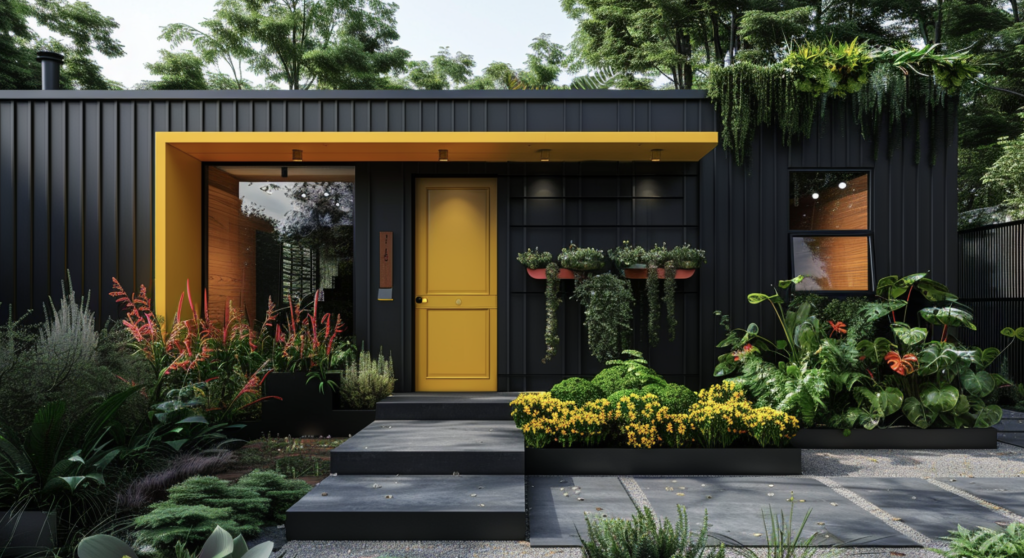
1. Roof Designs
Contemporary homes often have roofs with interesting angles. We have seen many houses with slightly slanted or dramatically pitched roofs.
These shapes add visual interest and can help with drainage or solar panel placement. Some contemporary homes take roof design a step further with green roofs.
These might have plants growing on top or even full gardens. It’s a neat way to add green space and help keep the house cool.
2. Integration with the Environment
Contemporary homes work with nature, using local materials and smart positioning. They may include eco-friendly features like rainwater collection systems.
Many contemporary homes are designed to complement their settings. They might use colors that match the landscape or have shapes that echo nearby landforms.
The goal is to make the house feel like it belongs in its spot.
3. Exterior Color Palettes
When we talk about contemporary homes, we often see a lot of neutral colors.
Neutral colors like white, black, and gray dominate contemporary homes, showcasing the building’s shape, while bright color accents add personality to specific features.
This might be a bright red front door or a yellow accent wall. These pops of color add personality and draw attention to specific features of the house.
Designing Your Home’s Contemporary Outer Shell
1. Planning and Conceptualization
Planning is key when designing a contemporary exterior. You can start by considering the overall look you want and how the house will fit its surroundings.
It’s helpful to use design tools or software to visualize ideas. These tools let me play with different layouts and features before making real changes.
2. Material Selection
Choosing materials is a big part of contemporary design. You can look for sturdy and good options for the environment.
It’s important to balance how things look and how well they work. Pick materials like sustainable wood, recycled metal, or energy-efficient glass.
3. Implementing Key Design Elements
When creating the design, you can focus on clean lines and a simple overall look. This might mean using straight edges and avoiding too many decorative details.
Also, think carefully about where to put windows. The goal is to let in plenty of natural light while maintaining privacy and energy efficiency.
Advantages of Contemporary Exterior Design
Contemporary homes offer a modern, eye-catching look. They’re often more energy-efficient, using new technologies to cut heating and cooling costs.
Due to their simple designs and durable materials, these homes typically need less maintenance.
Disadvantages of Contemporary Exterior Design
Building a contemporary home can be pricey. The unique designs and high-tech materials often cost more upfront.
Also, a very modern house might not blend well in a neighborhood of traditional homes.
This could affect resale value or your desire to match local styles.
Conclusion
The contemporary exterior style blends modern design with eco-friendly features, creating unique and efficient living spaces.
These homes are characterized by clean lines, large windows, sustainable materials, and smart color choices, offering a fresh take on residential architecture.
While contemporary design has its perks, it’s not without challenges. Higher upfront costs and potential neighborhood fit are factors to consider.
However, energy efficiency and low maintenance benefits could make it worthwhile for those drawn to this style.
Understanding contemporary exterior style can enhance appreciation for the thought and creativity behind these modern marvels, whether planning to build, renovate, or admire from afar.
As this exploration concludes, it’s clear that contemporary homes represent an innovative approach to residential design, balancing aesthetics with functionality and sustainability.





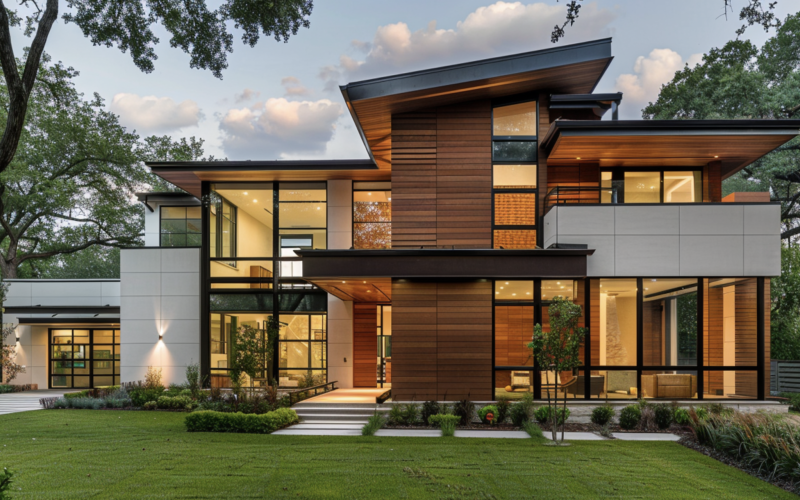

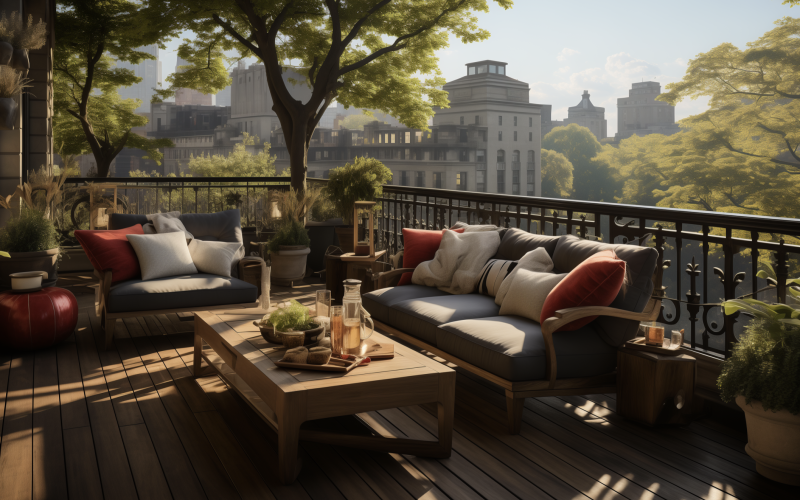
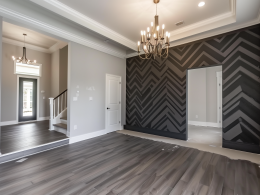
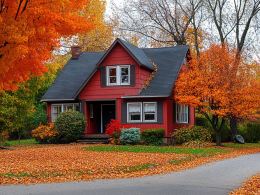
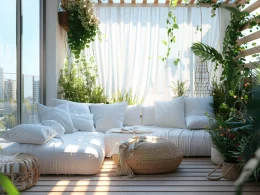
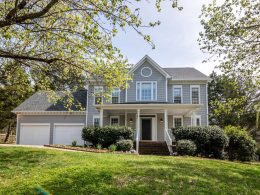
Comments 1